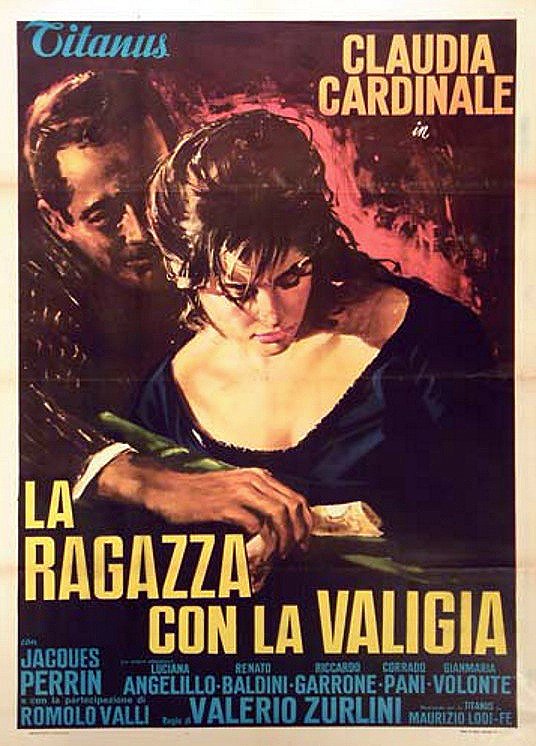One of Italian cinema’s most beautiful films
Claudia Cardinale is a masterpiece within a masterpiece
Zurlini makes a small story monumental, through the precision of his touch and the depth of his vision
For many, Valerio Zurlini’s most beautiful film. Watching it, it becomes clear that we are witnessing a fundamental work by a cinematic master of the highest degree. Magically poetic and provocatively sensual, it demonstrates how Zurlini, through the precision of his touch and vision, is able to make a small story monumental. The sweet and the bitter intertwine until they are indistinguishable, and the exploration of the complexity and depth of the characters progresses through the unfolding of small details. The theme par excellence of melodramatic cinema: love hindered by differences (in this case, class and age), set in an Italy characterised by the economic boom and song, which has rarely been depicted with such bitter and melancholic clarity. “La ragazza con la valigia does not represent just one of the many love stories condemned by life, it contains all of them” (Olaf Möller). Claudia Cardinale is a masterpiece within a masterpiece.
A slimy Casanova, heir to a wealthy family, seduces and then dumps Aida, an impulsive single mother struggling to make ends meet as a singer and dancer. However, she doesn’t give up and arrives at the man’s doorstep. To get rid of her, he lets his naive and romantic 16-year-old brother answer the door. Feelings begin to develop between the two (which one could probably call love), until a priest, worried by this turn of events, convinces Aida to leave. The young man intervenes to save Aida from another unsuitable seducer, but ends up getting beaten up. After embracing on the beach in Riccione, they both understand that theirs is an impossible love.
One of Italian cinema’s most beautiful films
Claudia Cardinale is a masterpiece within a masterpiece
Zurlini makes a small story monumental, through the precision of his touch and the depth of his vision
For many, Valerio Zurlini’s most beautiful film. Watching it, it becomes clear that we are witnessing a fundamental work by a cinematic master of the highest degree. Magically poetic and provocatively sensual, it demonstrates how Zurlini, through the precision of his touch and vision, is able to make a small story monumental. The sweet and the bitter intertwine until they are indistinguishable, and the exploration of the complexity and depth of the characters progresses through the unfolding of small details. The theme par excellence of melodramatic cinema: love hindered by differences (in this case, class and age), set in an Italy characterised by the economic boom and song, which has rarely been depicted with such bitter and melancholic clarity. “La ragazza con la valigia does not represent just one of the many love stories condemned by life, it contains all of them” (Olaf Möller). Claudia Cardinale is a masterpiece within a masterpiece.
A slimy Casanova, heir to a wealthy family, seduces and then dumps Aida, an impulsive single mother struggling to make ends meet as a singer and dancer. However, she doesn’t give up and arrives at the man’s doorstep. To get rid of her, he lets his naive and romantic 16-year-old brother answer the door. Feelings begin to develop between the two (which one could probably call love), until a priest, worried by this turn of events, convinces Aida to leave. The young man intervenes to save Aida from another unsuitable seducer, but ends up getting beaten up. After embracing on the beach in Riccione, they both understand that theirs is an impossible love.

